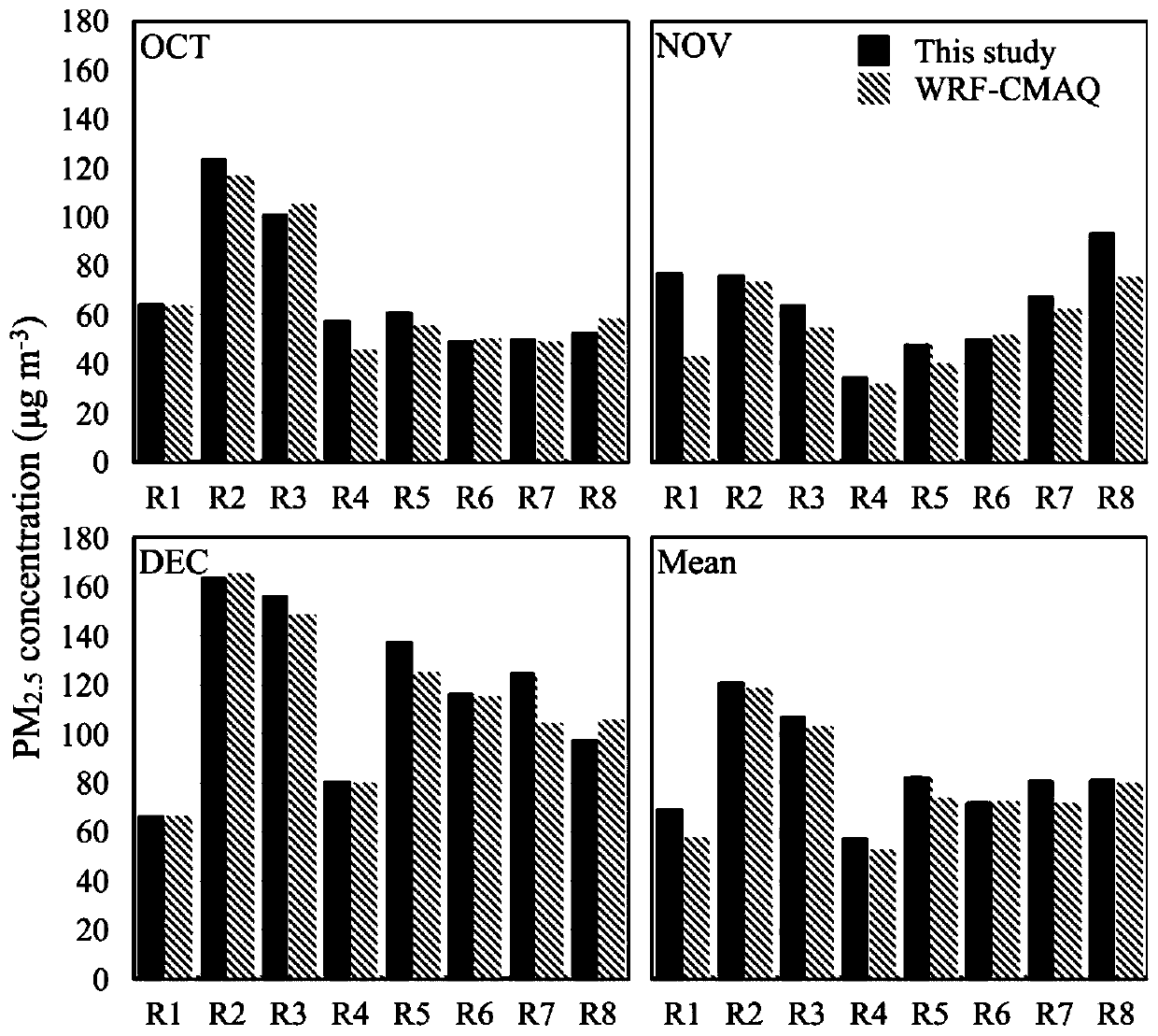A method to distinguish between changes in emissions in different regions and changes in meteorological conditions on PM 2.5 Method of Concentration Effect
A technology for meteorological conditions and regions, applied in particle suspension analysis, suspension and porous material analysis, measurement devices, etc. Small amount, short time-consuming, good simulation effect
- Summary
- Abstract
- Description
- Claims
- Application Information
AI Technical Summary
Problems solved by technology
Method used
Image
Examples
Embodiment
[0049] 1) Research period: October-December in 2013 and October-December in 2017, the research scope is the central and eastern regions of China (18°-54° north latitude, 92°-136° east longitude).
[0050] 2) Research area division:
[0051] First, the Chinese region (without considering Hong Kong, Macao, and Taiwan) is divided into four major regions: key regions, the Northern Region (NOR), the Southern Region (SOU), the Qinghai-Tibet Plateau region, and the Xinjiang Autonomous Region. The northern region and the southern region are divided according to provincial boundaries; the Qinghai-Tibet Plateau region and the Xinjiang Autonomous Region have small anthropogenic emissions and few measuring stations, so the contribution of emissions from these regions to other regions of China is not considered.
[0052] For the key regions in China that this study focuses on, it is divided into 8 regions, from north to south: R1, the northern part of Beijing-Tianjin-Hebei, including Zhang...
PUM
 Login to View More
Login to View More Abstract
Description
Claims
Application Information
 Login to View More
Login to View More - Generate Ideas
- Intellectual Property
- Life Sciences
- Materials
- Tech Scout
- Unparalleled Data Quality
- Higher Quality Content
- 60% Fewer Hallucinations
Browse by: Latest US Patents, China's latest patents, Technical Efficacy Thesaurus, Application Domain, Technology Topic, Popular Technical Reports.
© 2025 PatSnap. All rights reserved.Legal|Privacy policy|Modern Slavery Act Transparency Statement|Sitemap|About US| Contact US: help@patsnap.com



